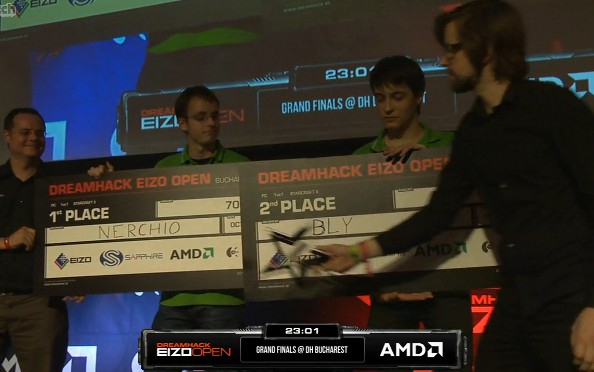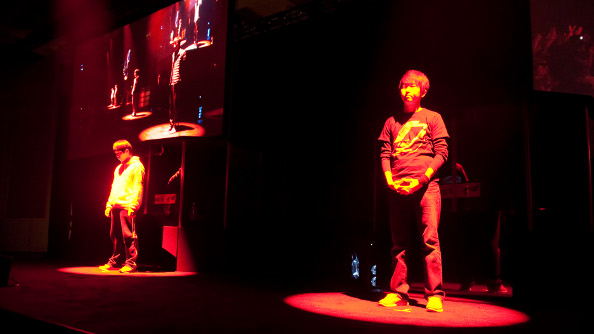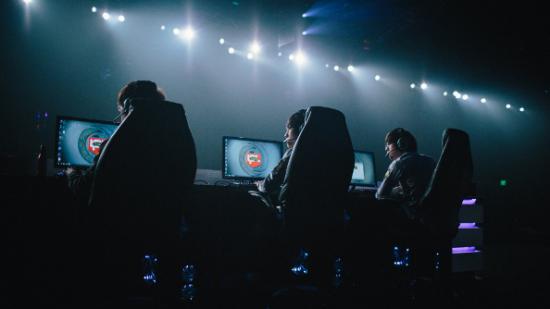There’s a bunch of little improvements that could make eSports friendlier to newcomers and longtime fans right now. But this year, there are also some deeper deficiencies that eSports organizers could stand to address. These are harder to fix because of the way eSports are structured right now, but they should be addressed in the long-run.
Make regular content relevant
Leagues like the IPL and MLG want to put on regular events for eSports fans to watch. The problem is, most of these recurring features and regularly scheduled programs are small-fry next to major eSports tournaments. Why spend your Wednesday night watching what amounts to an MLG exhibition match or an IPL qualifier when a major event is just around the corner?The GSL is able to do this with its tournaments, but that’s because a GSL season isn’t tied to a massive weekend event like most western eSports tournaments. The GSL is built for television from the ground-up, and by virtue of being the main Korean StarCraft 2 league, it can guarantee the kind of top-level competition fans want to see. MLG, for better or worse, is defined by its championships. As MLG and NASL programming demonstrate, it’s hard to recreate the excitement of an offline event with an online match with two players competing remotely.
I don’t know how you solve this problem, because it’s intrinsic to the way the eSports scene works. Riot’s solution is basically to take over the competitive LoL scene and hammer everything into a competitive framework that culminates with the Season Championship. That’s a promising approach, but hard for the more grassroots-driven StarCraft 2 and Dota 2 competitive scenes.
One solution, however, might be to start closing down the open brackets at championship events and using regular programming to open the door for lesser-known progamers to battle their way into a position where they can compete for a championship.
This would give regular programming some importance and perhaps unearth new talent while getting rid of the often mediocre open brackets that dilute major tournaments. TotalBiscuit made this observation himself when we spoke at IPL5, which had a huge field of qualified StarCraft pros and no open bracket. The result was one of the best tournaments of the year.
Better showmanship
Overwrought player intros. Giant checks that make it look like you just saw the crowning moment of a sweepstakes, not a tournament. Inane stage interviews in which players are asked questions like, “What is it like playing in front of all these fans?”
Please make it stop. I can’t handle many more cringe-inducing eSports moments like this. However you want to package it, most progamers are scarcely more than kids and no amount of production or stage management is going to turn two Korean teenagers into Ali and Frazier, or ten MOBA players into the Bulls and Knicks under Jordan and Ewing.
Nor does a check for $40,000 become more significant if it is the size of a highway billboard. We should be past the “Gee whiz, eSports are a big deal!” by now. Just once I’d like to watch a closing ceremony without thinking that Ed McMahon is about to burst onto the stage.

A tournament like GSL doesn’t even need the silly cash award at the end anymore: the photo-op moment is the trophy presentation and the traditional kiss from the winner. The enduring image of the League of Legends Season 2 championship is of the Taipei Assassins standing on stage together lifting their trophy as a team.
Let’s give room for some real traditions to form. Hell, even the champagne at DreamHack is becoming a tradition at this point, even if the tradition amounts to watching a teenager try and fail to unlock the secret of a champagne cork.
The best players compete for the distinction of honor of being the best at a tournament, of proving themselves against their strongest peers. Let’s have main-stage presentations that honor that pride and competitive spirit.
Let’s also stop bringing things to a halt with stage interviews that leave everyone looking and feeling slightly dumber for having been a participant, even a passive one. Yes, we know these pros appreciate their fans and are excited to be in a final or semifinal, but let’s drop the ritualistic Q&A.
Follow DreamHack’s lead, where they at least occasionally manage to have an interesting conversation about a player’s experiences during the tournament and his thoughts about a recent match. Whatever you do, don’t try and get players to trash-talk each other before a match. These guys see each other week after week, and grudges are few and short-lived (unless they involve Naniwa).
Stop counter-scheduling great matches
I know eSports tournaments operate on a tight schedule, and are almost always running badly behind. Still, I can’t be the only one tired of picking which one of of four terrific quarterfinal matches to watch, and which three to ignore. Assuming they’re all even streamed. Often, even the semifinal matches are run concurrently, so viewers end up missing tournaments’ most star-studded, hyped contests.

That puts an awful lot of pressure on finals to be amazing and, the truth is, being a final match is no guarantee of quality. We were very lucky in the latter half of 2012, where tons of finals went to seven games (or in IPL 5’s case, went to eight games). But I’d still like a chance to catch the majority of the championship bracket games, where a lot of stars usually end up.
It’s particularly frustrating in League of Legends, where there simply aren’t that many match-ups to go around. When CLG and Moscow 5 are playing at the same time as CLG.EU and Taipei Assassins, you know you’re going to miss something terrific no matter which match you watch.
This is a hard one to solve, though, because the only real solution is either smaller tournaments or longer ones, neither of which really works great for big weekend events. IPL 5 was four days long and still went late into Sunday night. Smaller tournaments might make the most sense (who really sees that much of the early rounds, anyway?) and might dovetail with my earlier point about regular content. On the other hand, the sheer size and spectacle of these things is a big part of the appeal for the crowds. But as stream numbers continue to grow, it might be time to start thinking about ways to ensure people see more quality games.
